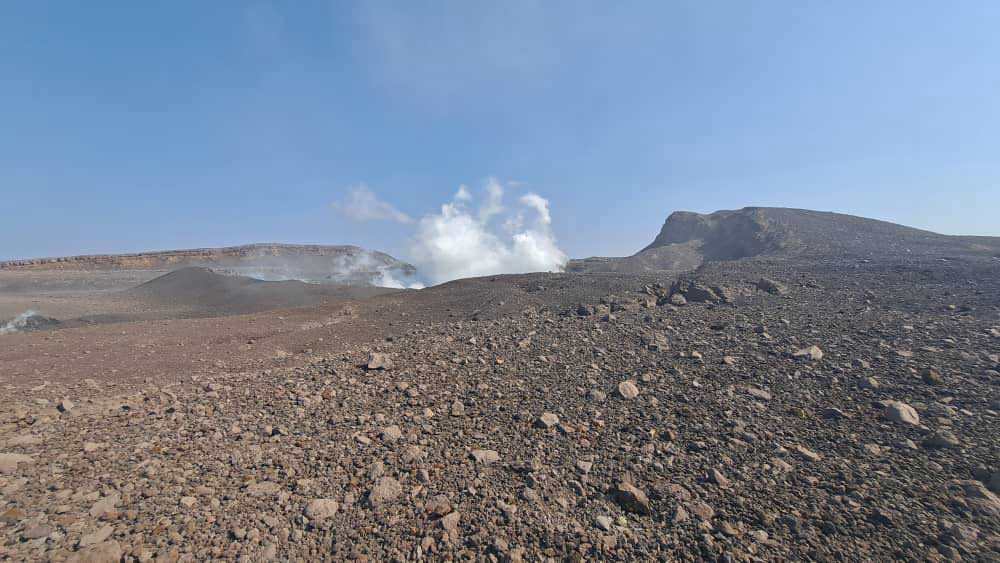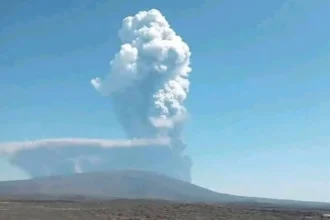The Ethiopia Volcano Eruption of Hayli Gubbi, in the most remote part of Ethiopia, in Afar, released its power on Sunday, November 23, 2008. This was the first time in 12,000 years since the volcano had erupted, and this geological event made news around the world. The explosion caused the seismic shock to run over the area and immediately attracted the attention of the meteorology bodies, aviation and even scientific organisations across the world. The Ethiopia Volcano Eruption has been termed one of the most significant geological events of the decade.
The huge blast formed ash clouds to heights of 14km (9mi), which was an awesome spectacle captured by satellites. It has taken place in the Rift Valley – a geologically active area that is subject to seismic and volcanic activities, further reinforcing the global concerns triggered by the Ethiopia Volcano Eruption.
Disastrous Impact on Local Society and Animal Farming
The ash clouds spread so widely and affected settlements locally as the Ethiopia Volcano Eruption occurred. A local administrator, Mohammed Seid, claimed that nobody was killed, but several villages were devastated. Layers of ash that were distributed around the pastoral villages devastated livestock herders since livestock found it hard to graze on polluted grazing fields.

The economic recession caused by the volcano in Ethiopia threatens to leave thousands of herders, who rely on livestock to earn money, without any means of basic sustenance- and even lives. The released sulfur dioxide was a cause of concern to the environmental scientists. The Danakil Desert, which is one of the popular tourist sites, was covered in ash.
It paralysed tourism-based businesses and left guides and tourists in the Afdera region without a means of carrying on with their itinerary and giving this natural wonder an unreachable look – a direct outcome of the Ethiopia Volcano Eruption.
Oman, Yemen, India and Pakistan were all covered with ash clouds
Toulouse Volcanic Ash Advisory Centre (VAAC) had an issue warning the world after the Ethiopia Volcano Eruption, as the ash was spreading across the continents. It travelled by the Red Sea to the West and to Oman and Yemen, and to East India and northern Pakistan. Oman was reporting the ash in the entire Arabian Peninsula, which resulted in a significant air quality reduction linked to the Ethiopia Volcano Eruption.

The aviation authorities reacted rapidly. The Indian Directorate General of Civil Aviation advised airlines to avoid flights on the concerned altitude bands and sent an emergency warning on volcanic ash (ASHTAM, Volcanic Ash Advisory on Aviation) and elaborate safety instructions. Several flights were cancelled or delayed due to the fact that airlines felt insecure regarding passenger safety, and the effects of the eruption on air transport in other countries across the world were felt in a wide range, further demonstrating the far-reaching consequences of the Ethiopia Volcano Eruption.
The Sulfur dioxide emissions are of particular concern to environmental scientists. The volcano ash emitted huge volumes of emissions that most probably will impact the quality of the air in most nations. According to Ibrahim Al Jarwan, the Chairman of the Emirates Astronomical Society, ash and sulfur dioxide might lead to respiratory and eye irritation to affected people in Yemen, Oman, etc., because of the Ethiopia Volcano Eruption.
Scientific Significance and Adhering Observations
The volcano provides scientists with an uncommon chance to observe a volcano system that has been dormant and come back to life. According to the Global Volcanism Program of the Smithsonian Institution, no eruptions of Hayli Gubbi have been recorded in the Holocene, not even in the last 12,000 years.

The fact that this is rare renders the event, the Ethiopia Volcano Eruption, a scientific and scientifically important process in the study of volcanic reactivation and tectonic processes within the East African Rift. The leadership is on high alert because shield volcanoes have the potential of making additional outbursts, especially after such a major Ethiopia volcano Eruption.
Scientists are on high alert to the possibility of the eruption restarting, and as such, continuous monitoring of the volcano and patterns of ash spreading is required. The fusion of meteorological data, satellite shots and on-the-ground monitoring offers complete monitoring of the post-eruption and atmospheric path, all stemming from the ongoing effects of the Ethiopia Volcano Eruption.
Read More: Starlink’s Non-Stop Free WIFI in Dubai Flights Making Air Travel More Powerful Than Ever















